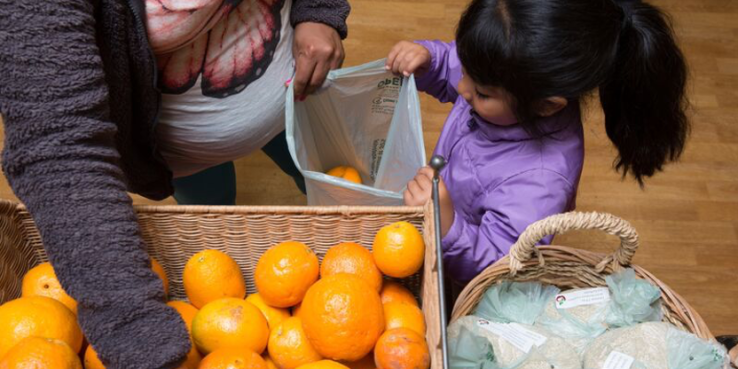Imagine if insurers paid for the prevention — not just the treatment — of severe medical conditions. What if the health care system could help people improve their health today while also preventing diabetes or reducing the risk of heart attacks tomorrow? With the end of the COVID-19 pandemic in sight, the California Department of Health Care Services is working on doing just that.
Specifically, California has the chance to expand and further refine promising healthy food interventions as part of its California Advancing and Innovating Medi-Cal (CalAIM) proposal. Once every five years, states can apply to the federal government for exemptions to Medicaid rules to pilot new and innovative strategies for providing health care. The finalized CalAIM proposal will form the state’s application for the federal waiver, to be submitted this summer.
The current CalAIM proposal includes a broad spectrum of interventions for improving the health of people with or at risk of chronic health conditions such diabetes, heart disease and more through a mechanism called “in Lieu of Services” (ILOS). ILOS are generally nonmedical services offered instead of, or to avoid, more expensive standard Medicaid benefit like frequent emergency room visits for non-emergency situations or admission to skilled nursing facilities. The ILOS included in the CalAIM proposal range from covering first and last month's rent to prescriptions for fresh produce and home-delivered meals. For example, a patient with a high-risk pregnancy may be provided with $40 per month of free fruit and vegetable vouchers to reduce the likelihood of preterm birth. However, health insurance providers are not required to offer these interventions but instead must opt-in.
Pilot programs across California and the nation demonstrate that making healthy food more affordable and accessible — through fruit and vegetable vouchers, produce prescriptions, healthy food boxes and medically tailored meals and groceries — reduce blood pressure, preterm births, rates of depression, body mass index and average blood sugar. These interventions can then be paired with nutrition and cooking education and behavioral counseling as needed to amplify and sustain the impact of the healthy food. This category of interventions — known as medically-supportive food and nutrition — can also be tailored to meet the needs of a patient in a culturally relevant and cost-effective way.
Research shows that if states expanded these types of programs broadly, they would reduce health care costs around the country. A 2019 study found that reducing the cost of healthy foods by 30% for Medicare and Medicaid patients nationwide would lead to more than $100 billion in formal health care cost savings.
Were California to move in this direction, it would join other pioneering states like North Carolina and Massachusetts, which have already begun piloting medically-supportive food and nutrition interventions through Medicaid, with federal approval. Now with the path forged by other states, California should build on their momentum.
Governor Gavin Newsom has indicated his support for prioritizing prevention by proposing $48 million for implementing the innovative ILOS proposed by the state Department of Health Care Services. To fully realize this investment and the long-term cost savings, California’s health plans must opt into providing in Lieu of Services including medically-supportive food and nutrition interventions. We still have time to seize a victory in improving patient health and reducing health care costs. Let’s not let this opportunity pass us by.
